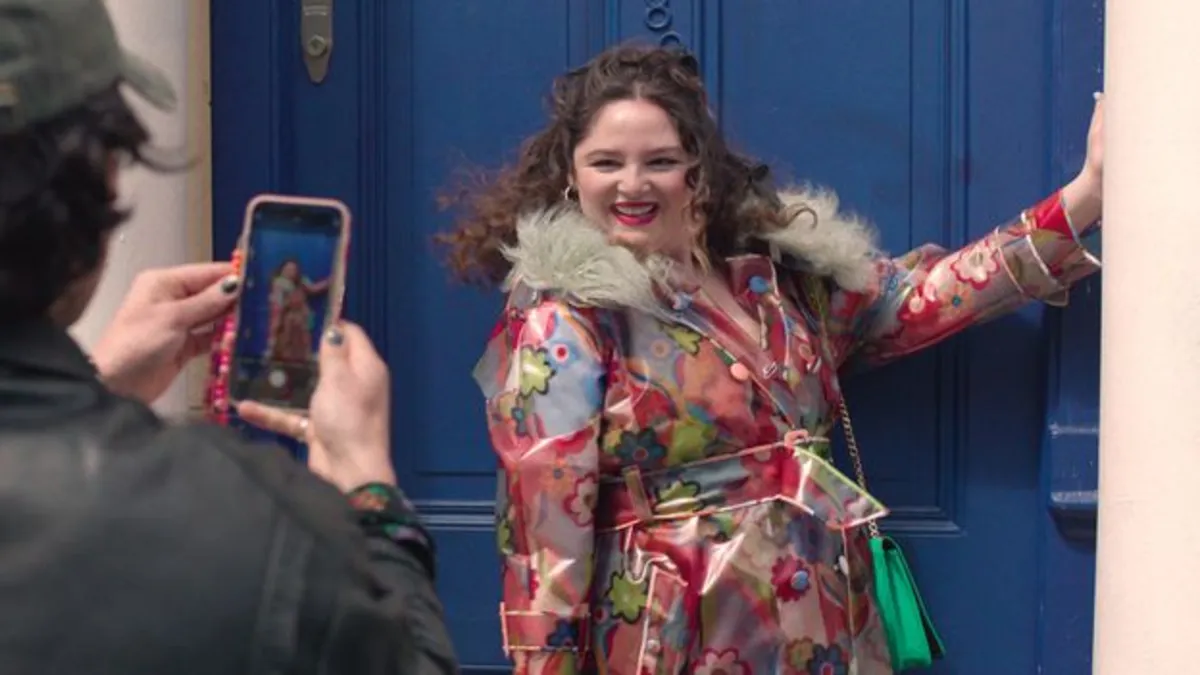
In Lena Dunham's new series, Too Much, the protagonist Jessica, portrayed by US comedian Megan Stalter, embarks on a journey from New York to London with expectations shaped by the romanticized portrayals of the city in films like Bridgerton and Jane Austen adaptations. However, upon arrival, she discovers not the charming country estate she envisioned, but rather a stark reality of life on an East London council estate. This sets the stage for a fresh narrative of an American's exploration of Europe, starkly contrasting with the glamorous escapades of characters like Emily in Paris.
Unlike the picturesque depictions of London often seen in popular cinema, where locations are adorned with designer outfits and scenic backdrops, Too Much delves into the city's gritty underbelly. Jessica encounters vast housing projects, bustling pubs, and vibrant music scenes, highlighting a more authentic side of modern London. This contrast raises the question: does Too Much truly reflect the reality of contemporary London?
Since the 1990s, British films have largely showcased a sanitized version of London, epitomized by the Notting Hill phenomenon. The eponymous film, starring Hugh Grant and Julia Roberts, transformed the neighborhood into a tourist hotspot, with its colorful houses attracting countless visitors and Instagram enthusiasts. Unfortunately, this has led to some residents resorting to painting their homes in muted tones to escape the unwanted attention.
Timeless classics such as Bridget Jones's Diary, Four Weddings and a Funeral, and Love Actually have contributed to the idealized image of London, often featuring characters residing in attractive West London homes. Recent Netflix hits like The Crown and Bridgerton have continued this trend by showcasing the city's most glamorous landmarks. Yet, London has also been depicted in various shades throughout cinematic history, from the bombed-out ruins post-World War II in Passport to Pimlico (1949) to the edginess of cult classics like A Clockwork Orange (1971) and Withnail and I (1987).
Even the recent Apple TV+ series Slow Horses, featuring Gary Oldman, has chosen to highlight urban East London, further emphasizing the city's diverse narrative landscape. While films like Notting Hill and Bridget Jones remain highly regarded, with the former consistently celebrated as one of the best romantic comedies ever, Too Much endeavors to present a different aspect of the city.
Jessica's experiences resonate with Dunham's own journey. Upon her arrival in London in 2021, Dunham found herself encountering the stark contrasts between her expectations and the reality of living in the city. "I want people to see what I did when I first arrived," she shares, emphasizing the disparity between the glamorous portrayal of London in films and its true essence. While Too Much features a manor house, it also showcases real council estates, record stores, and music venues, underscoring the series' commitment to authenticity.
In a standout episode titled Notting Kill, Jessica humorously confronts the stereotypes perpetuated by the Notting Hill narrative, attending a dinner party at the iconic blue door made famous by Hugh Grant's character. This self-aware approach is a hallmark of Dunham's storytelling, evident in her previous work on Girls, where she depicted a more realistic side of New York living.
Tim Bevan, one of the producers behind Too Much, reflects on the series' premise of an American expecting the refined charm of Pride and Prejudice only to find a different reality. He hopes that the show will serve as a refreshing antidote to the overly simplistic depictions of cities like in Emily in Paris. The cultural impact of such series is undeniable; just as Amélie shaped perceptions of Paris, Too Much seeks to redefine London's image.
Bevan's personal connection to Notting Hill deepens his appreciation for how films influence location tourism. He notes that while parts of London once viewed as affordable are now aspirational, they still possess a unique charm and diversity. "Hopefully, Too Much will mean some weird pub in East London will be suddenly inundated from all over the world," he adds, highlighting the potential for the show to shift perceptions about the city.
Ultimately, Too Much explores the complexities of London's identity, merging humor with a heartfelt tribute to a city that Dunham now considers home. She reflects on the duality of feeling like a stranger in her native New York while finding solace in London. "I had a strong feeling of peace that I was at home," she shares, encapsulating the essence of her journey. Through this series, Dunham invites viewers to reconsider their notions of London, blending the idealized with the real—a narrative that resonates deeply in today's cultural landscape.